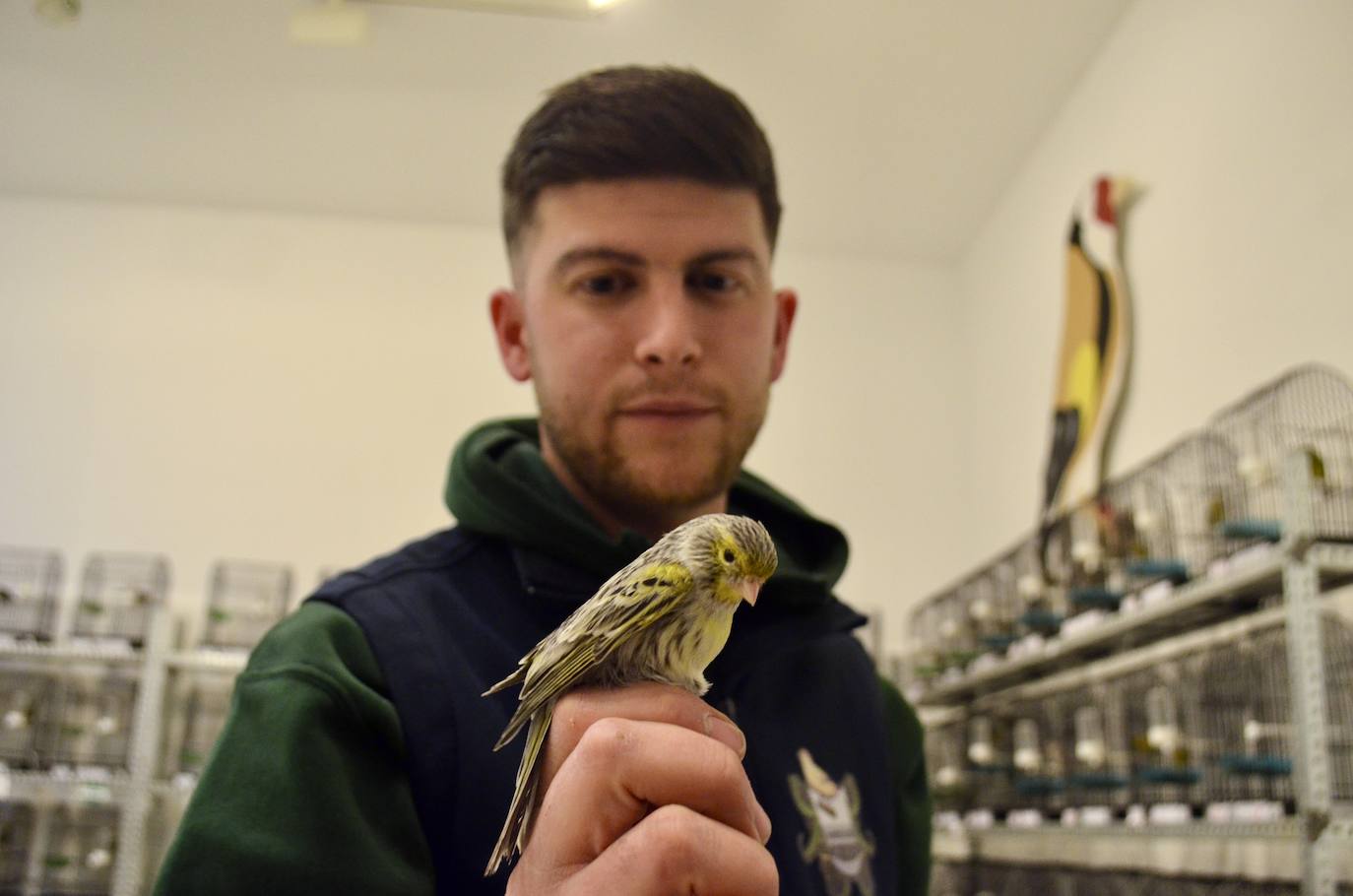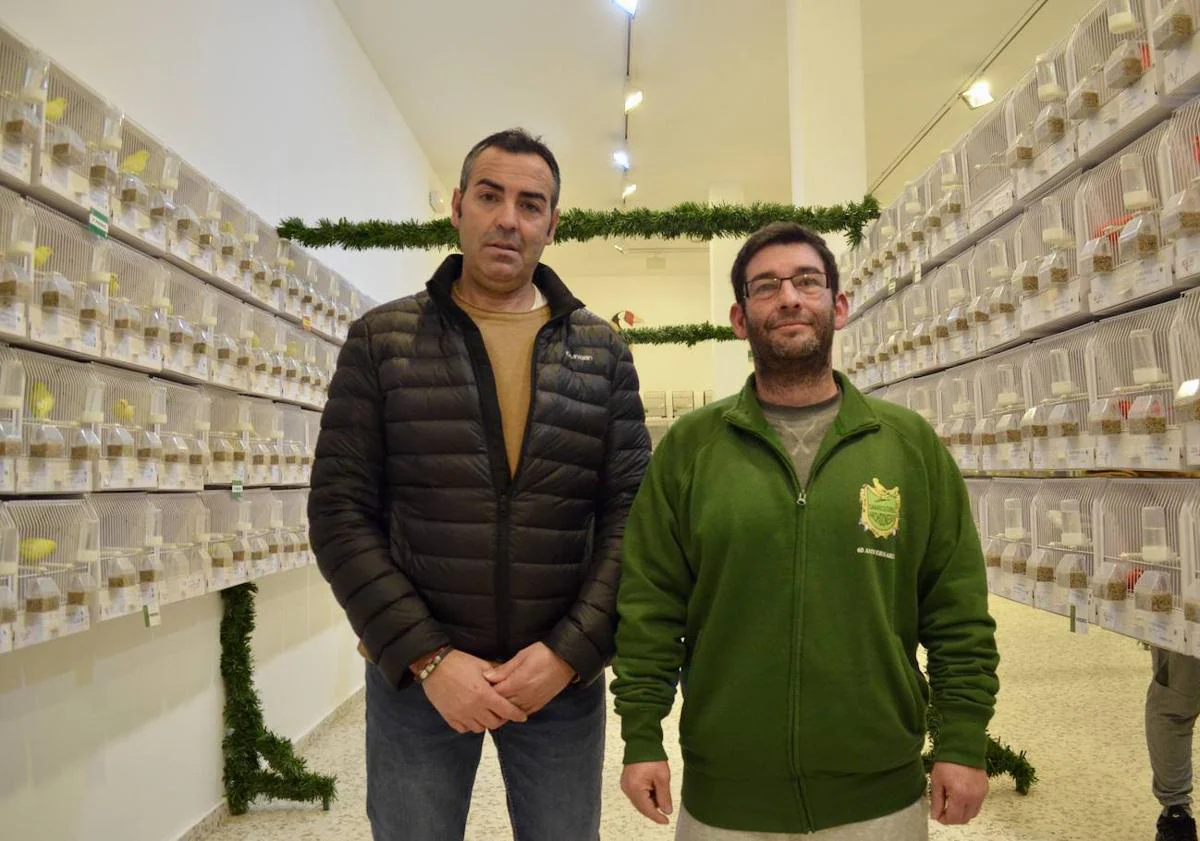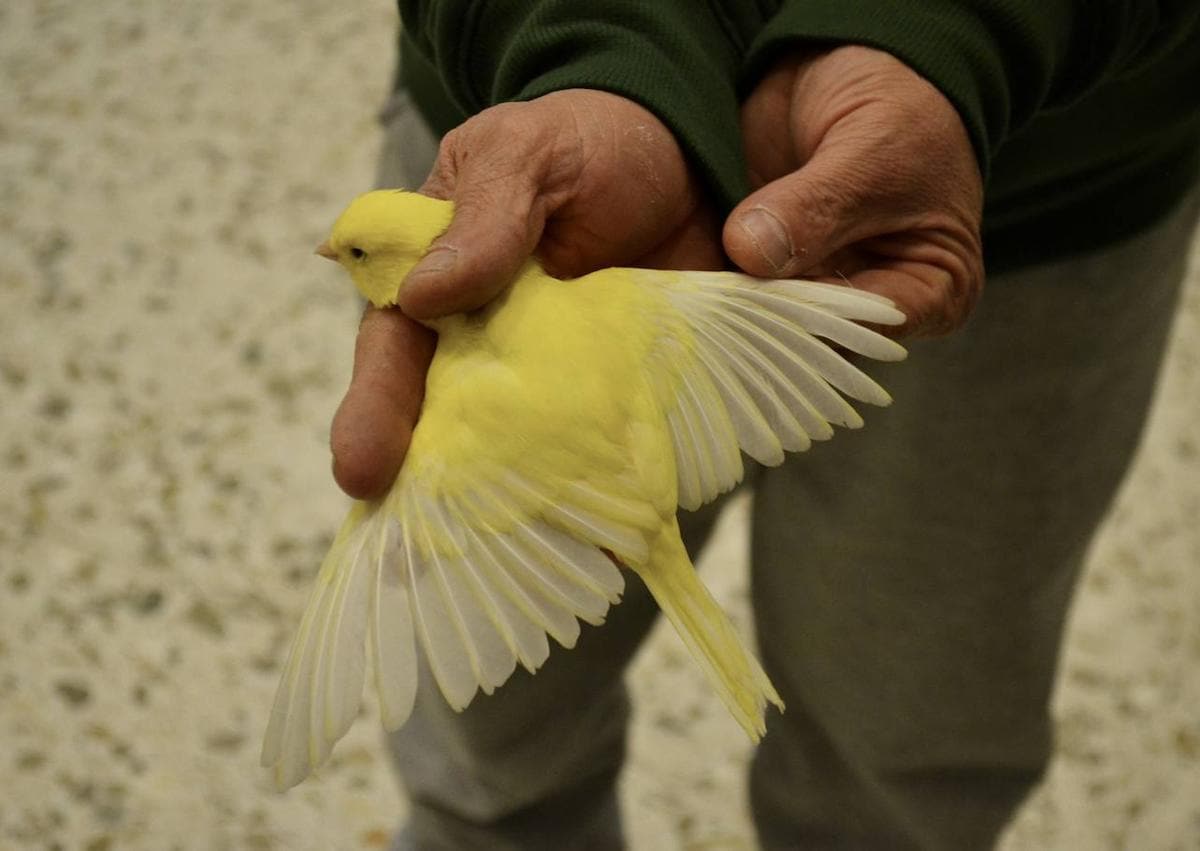Canary fanciers from all over Andalucía flock to inland Malaga town's 60th annual show
Over 800 birds from around 75 different breeders were on display in Archidona last week
Alba Tenza
Archidona
Friday, 19 January 2024, 13:10
Even before entering the exhibition hall, we can hear them singing in unison. The main man walks down the central aisle of the hall as though he were at home. At 88 years old, being surrounded by hundreds of bird-cages is yet another fond memory of a life dedicated to his greatest passion in life. Reds, yellows and many other varieties of canary watch him closely from the corner of one eye. They know that Rafael Nuevo is considered a master of breeding and showing canaries in his home town, and they are not mistaken - this resident of Archidona is one of the founding members of the town's Canariculture Association.
“In 1962, a group of about six bird-loving friends met up in Archidona and decided to form this group, which is now the second oldest in the province,” the canary breeder tells SUR. The passion for canaries is a hobby that is passed down from generation to generation in Archidona. “When I was five years old, I would always go to my grandfather's house, see his birds and they’d fill me with delight. Now I feel both passion and a sense of duty to continue with this because he created it and, furthermore, it’s part of the town, the people,” states his grandson, Javier Morales, currently the association’s secretary.

The reason for all the singing in the hall is the same reason that so many people have gathered there. Archidona’s traditional canary breeders’ show has just blown out 60 anniversary candles in celebration of this significant milestone. “This year more than 800 specimens have been exhibited, about 75 breeders have come from all over Andalucía,” says Francisco Sánchez, president of this bird association. Bringing together so many canaries in competition means that bird-keeping is still alive, although plenty has changed in 50-plus years.
Black and white cages are set out in pairs but, as you walk through the three exhibition rooms, what is striking is that they are all classified by colour. “Before there were less varieties of colour, now there is an infinite number. We were one of the first to cultivate the red-coloured canary that arose from cross-breeding the Red Cardinal from Venezuela with a standard canary,” recalls Nuevo. When breeding times were good, this particular breeder would have up to 100 pairs of canaries at home, but nowadays he keeps himself busy watching over his grandson’s birds, which are kept together in the same room at his house where it all started.
After a life dedicated to rearing canaries, Nuevo admits that the hobby has changed: “We were few in number but we bred in a different way, bird-keeping isn’t as straightforward as it was then, I would rear the canaries on softfood made with carrots, red peppers and chopped hard-boiled eggs, nowadays everything is more up-market and has changed completely”.
Morales is a breeder too and has won awards at national level. However, for him there is nothing more special than the bond he has with his grandfather for their shared passion. “I could have them at my house, but it makes me happier that they are at my grandfather's house and I get to go there to take care of them, that gives me more satisfaction than the quality of the birds,” he says. When asked about the future of this special hobby, the young man stares at one of the canaries as if he were looking at his most treasured possession and responds: “Today everything is more difficult, there are more and more hurdles, everything costs more, I’m finding it tough because there are fewer and fewer young people who are into this, and yet it’s a very healthy hobby because you learn about biology and it’s good for personal growth”. Morales too has had to reduce his breeding pairs to 70 specimens due to the challenging environment for the trade.
Competition canaries are sorted into prize categories according to their colour, colour brightness and overall appearance. Lipochromes (no pigmentation - only the basic ground colour of white, yellow or red-orange), clears, ticked and variegated are some category examples. One of the canaries tagged with a first prize is a lipochrome yellow that belongs to Sánchez. “This year I have reared about 115 canaries, but I want to try to breed fewer because local breeders are having a hard time. Previously a breeder would trade with others, but that’s all gone now”. Preparing a canary for competition requires an exhausting level of care. As the president of the association explains, when a white canary is to be shown, the washing routine is key: a small brush, warm water and paper to absorb the water. With this technique, a shiny plumage is assured. However, price increases have meant that keeping so many canaries can be an impediment for their breeders.



Obstacles
"The truly committed breeder in this profession will carry on, but others are going to try to breed as little as possible because you cannot make a living from a hobby, and needs must,” concludes Juan Antonio Ramos, treasurer for the association and owner of 100 specimens of the yellow canary. This local man has backed the association to help keep this hobby alive and to ensure this traditional contest held in the town will not be lost. Standing beside him, Sánchez mentions that more and more breeders are no longer breeding due to price increases in vitamins or ready-made softfood for the chicks.
“Nowadays birds cannot be sold so, if transfer of ownership is not permitted, hobbyists become fed up and stop breeding. I hope we can move forward,” says Nuevo. What remains singularly clear to him is that this meeting up with friends who are fanciers of all things canary will always provide a good reason for celebration in his town, where rearing canaries is more than just a hobby.


Comentar es una ventaja exclusiva para registrados
¿Ya eres registrado?
Inicia sesiónNecesitas ser suscriptor para poder votar.